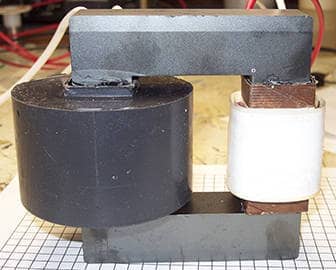A transformer is a device which facilitates the change in voltage in an alternating current electronic circuit. They are used in many electrical and electronic devices. These transformers are distinguished on the basis of their design and operation. There are two very general types of transformers, step up and step-down transformers. Of these two types, step-down transformers are one of the most popular ones. So, what is a step-down voltage transformer? This post introduces you to this transformer and its working principles.

Step-Down Voltage Transformer Discussed in Brief
It is simply a device, which steps down or lowers the input voltage by a set ratio, so that the secondary voltage becomes lower than the primary voltage. This is essential in the case of electricity distribution, wherein the voltage from a power plant is supplied to the connected electrical stations and the grid. The step-down transformer works in sync with the electrical distribution system by taking the much higher power plant voltage and stepping it down to voltages that can be used in all kinds of electrical devices. Lowering the voltage levels is essential when distributing the energy that is supplied by power plants and distributed to end users.
How Does a Step down Voltage Transformer Work?
Primarily, a step-down transformer works on the basic principle of electromagnetic induction. According to Faraday’s first law of electromagnetic induction, a conductor when placed in a varying electromagnetic field will see an induced current based on the rate at which the flux changes. Since the transformer comprises of two coils, the primary and secondary windings, they have a high mutual induction and a common magnetic field. As such, the primary can induce a current in the secondary winding.
What Comprises a Step-Down Voltage Transformer?
A step-down voltage transformer comprises of a primary and secondary winding and a magnetic core. The primary coil has more number of windings than the secondary coil. These coils are mostly made of copper or aluminum conductors. Here are a few pointers you must consider:
- The primary winding is connected to the primary voltage and the secondary winding to the load which draws the resultant stepped down voltage/current.
- The AC voltage applied gives a push to the primary winding. The alternating current in the primary winding induces flux in the magnetic core that the primary winding is wrapped around.
- The shared alternating magnetic flux that is now also passing through the center of the secondary winding now induces a current in the wire of the secondary winding.
- The voltage level of the secondary depends upon the number of windings the flux passes through. The number of turns of the primary and the number of turns of the secondary give the resultant turns ratio that the voltage is stepped down.
- We know that the current is directly proportional to the voltage. So, the current is typically higher in the secondary coil because of the lower voltage (at the same power level). Which means the current in the primary coil is typically less.
Transformers are widely used in generation, transmission, and distribution of electricity. Also, they are used to achieve electrical isolation in devices such as a doorbell for safety purposes. They also help drive the motor in various electrical and electronic appliances.
Custom Coils is a well-known manufacturer of world-class transformers of all types. The company provides step-down voltage transformers in various configurations to help you meet your application requirements.
